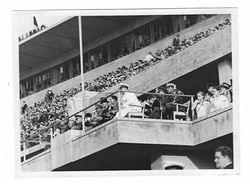Immigration and America's Racial Reckoning

By Jonette Christian
March 31, 2022
The Civil Rights Movement was America's greatest Moral Crusade, the culmination of years of determined Citizen Activism, leading to radical changes in the 1960s. We didn't just settle for a level playing field.
We embraced Affirmative Action, expanded Anti-Poverty Programs, rewrote history books, renamed public buildings, erected new statues, promoted talented Black people in journalism, sports and Hollywood. Multiple Black Mayors, City Councilors and Police Chiefs were elected.
Black Incomes grew after World War I and the Black-White Wage Gap narrowed until around 1970. This remarkable achievement was mostly accomplished in the face of The Jim Crow Laws and with minimal help from White People.
In the ensuing half-century, the gap widened to 1950 levels. What happened?
A new book, "Back of the Hiring Line" by Roy Beck, offers a meticulously documented perspective on this national puzzle. Along with employment data, immigration and labor historians, Beck tells the story through the writings and speeches of Prominent Black Leaders such as: Booker T. Washington, Frederick Douglass, W.E.B. DuBois, A. Phillip Randolph and Black-Owned Newspapers, all of whom doggedly advocated for tight labor policies following the Civil War.
Finally, a mounting demand by Black and labor activists forced Congress to cut immigration numbers in half in 1924. The Great Wave ended. Blacks began migrating North to fill blue-collar jobs in factories deprived of European workers.
During this half-century of tight labor, wages increased, wealth disparities shrank, the middle class exploded and Black average incomes skyrocketed. Employers were forced to hire and train from within, negotiate with unions for pensions, cost of living wages and health care.
But, in 1965, Congress changed course again, radically expanding annual immigration numbers. Since 1990 Congress, placating the tech lobby, has given away millions of high-paying tech jobs through guest worker programs. The demand for foreign workers is unending. This February, the House passed the America Competes Act, expanding yet again foreign worker visas.
With the surge in foreign workers, some employers tended to prefer immigrants who were willing to accept long hours and lower wages. Blacks were shafted in one industry after another where previously employed. They also missed out on entry-level jobs in technology, losing the opportunity to develop those skills, networks and work experience that lead to upward mobility and generational wealth.
Blacks earn one in 10 Computer Science degrees nationwide, but account for only 2.6% of Silicon Valley tech workers. Seventy-one percent of tech workers in Silicon Valley today are foreign-born.
In the 1990s, Congress authorized the formation of the U.S. Commission on Immigration Reform. After seven years of study, the commission told Congress to significantly decrease immigration, setting an annual cap of 550,000. The current level of immigration is over one million annually. Congress ignored the experts they had chosen to consult and set immigration numbers to please business lobbies wanting more workers, more consumers and for the clamor to be for more foreign labor continues.
Immigration numbers have played a largely unrecognized role in forcing vulnerable groups to compete against each other and Blacks have been especially harmed.
The solution is simple: Congress should reduce the numbers. All workers, immigrant and native-born, would benefit from tighter labor markets and higher wages.
Jonette Christian is a founder of Mainers for Sensible Immigration Policy. This piece originally ran in the Lewiston Sun-Journal.












































